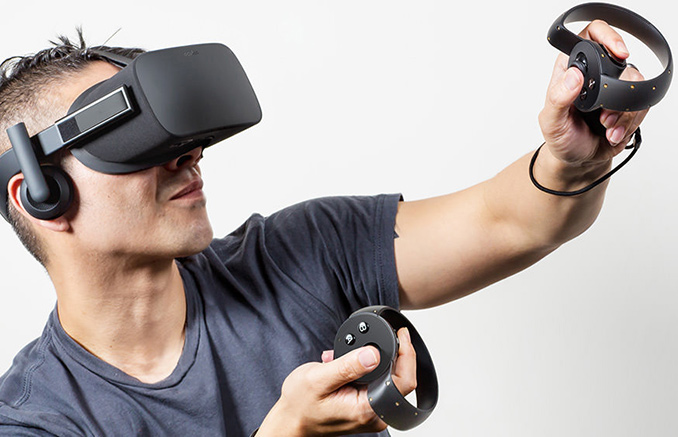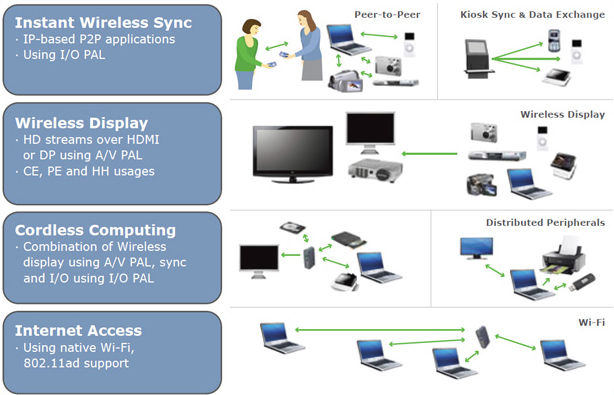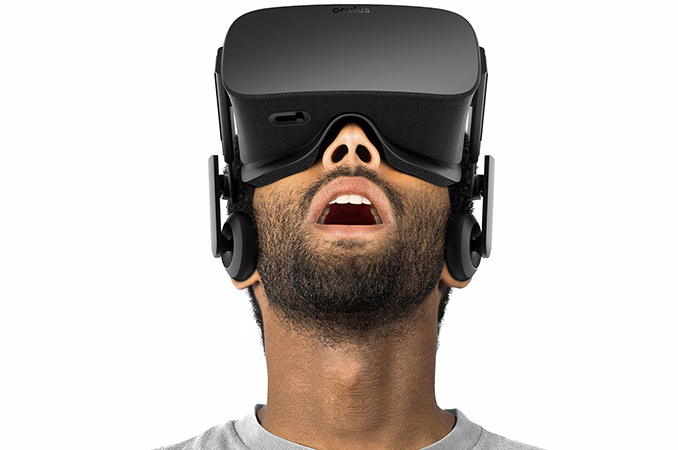AMD Acquires 60 GHz Wireless IP and Staff from Nitero
by Anton Shilov on April 15, 2017 9:00 AM EST
AMD on Tuesday announced that it had acquired millimeter wave radio-related intellectual property and key engineers from Nitero. Nitero specialized in radio technology for the 60 GHz range, which is expected to be the basis of a number of short range wireless standards.
AMD indicated that they purchased Nitero in order to focus on developing the necessary technology to wirelessly connect AR and VR headsets to host PCs, thus improving AR/VR experience. Though more broadly speaking, Nitero’s low-latency 60 GHz wireless interface in general can be used in various ways to connect different devices, and owning such an IP may be important for AMD’s patent portfolio.
Current-generation VR headsets connect to PCs using HDMI interface, which is very convenient, but which naturally reduces freedom of movements and sometimes adds certain complications. Since VR headsets are just head-mounted displays with audio, usage of HDMI is just natural because the interface has enough bandwidth for high-resolution high-framerate graphics and because the software stack is already here — OSes, drivers, applications “understand” what HDMI is. Moreover, with 10.2 Gbps raw throughput (8.1 Gbps with 8b/10b overhead removed), the HDMI 1.4 provides enough bandwidth for 2160×1200 at 90 Hz resolution offered by the HTC Vive and the Oculus Rift.
Meanwhile cables sometimes negatively affect VR/AR experiences and even usage models. A number of companies (DisplayLink, TPCast, Nitero etc.) have been trying to use the millimeter wave radio technology to build wireless VR headsets and some of them even demonstrated their devices at MWC 2017 earlier this year. It is not completely clear whether the 60 GHz radio used by the three aforementioned companies is compliant with the WiGig (802.11ad) specification, but Nitero is known for its WiGig chips for mobiles.
At present, WiGig is used for wireless docking stations and provides ~7 Gbps of bandwidth, which is enough for transmission of documents or files, but is barely enough even for current-gen VR headsets (not to mention input lag). Nonetheless, it is important to start from something and it appears that AMD is betting on Nitero’s technologies. Just to add perspective, the WirelessHD 1.1 standard designed by Silicon Image supports up to 28 Gbps data transmission rate — that is comparable to DP 1.4 and is enough for 4Kp120 with compression (or 8Kp60), so 60 GHz radios can scale very well.
AMD said that Nitero had created a phased-array beamforming millimeter wave chip that can enable “multi-gigabit transmit performance with low latency” for VR headsets without line-of-sight requirements associated with some other implementations of millimeter wave radio technologies, which suits wearables very well. AMD is not disclosing exactly what they intend to do with the IP beyond further developing it for VR/AR, so it's not clear at this time whether they intend develop their own products from it. AMD could further develop the IP and then license it out for partners to build the final products, or design the chips themselves and sell that to partners as part of a reference kit. There's also the possibility of integrating the IP into their other products, though the extreme short range nature of 60 GHz wireless does pose some unique challenges to applications that aren't line-of-sight.
So far, wireless display technologies (apart from Miracast) have not really taken off due to various reasons. But since so many companies are working on such technologies based on 60 GHz radio, the prospects of its millimeter wave radio IP here may be considerably more promising for AMD if it manages to popularize the standard first among developers of VR headsets and then among makers of displays.
Putting our speculations aside, the only thing that AMD shares now is that the Nitero acquisition is a long-term investment that could enable the company to create more immersive computing experiences.
Related Reading:
- The Khronos Group Announces New Standards Collaboration for VR Integration
- IFA 2016: Live Blog of AMD Keynote with Mark Papermaster, CTO
- Intel Announces Project Alloy: Untethered Augmented Reality in a VR Headset with RealSense
- GDC 2017 Roundup: VR for All - Pico Neo CV, Tobii, & HTC
- Oculus VR Acquires The Eye Tribe, Developer of Eye Tracking Technologies
- IFA 2016: Qualcomm Announces VR820 Reference Platform, QCA9379
Source: AMD












19 Comments
View All Comments
Reflex - Monday, April 17, 2017 - link
You do a good job describing the mental trap conspiracy theorists find themselves in. Read "Why People believe Weird Things" by Michael Shermer of Skeptic Magazine sometime. Your posts here provide some object lessons in much of what is explained in there. You may even find it useful, that book and a few others on logic helped me clean up my own belief system, not by telling me what to think but by laying out guidelines for how logic actually works, and what traps humans often fall into including the evolutionary basis for why those are mental weak points.Your assumptions about me are amusing, btw. ;)
ddriver - Tuesday, April 18, 2017 - link
"Belief system" - sorry dude, I don't do "belief". I know, I postulate, I extrapolate, I estimate. But believing anything or anyone - that's just silly. I'd rather "not know" than to believe.About "conspiracy theories" - let's just say this has become the go-to solution to cover up every actual conspiracy. To the indoctrinated mind, just labeling something a "conspiracy theory" is somehow enough to discredit it. Amazing. It's like a magic word, no thinking required.
Reflex - Tuesday, April 18, 2017 - link
Well you are doing it wrong. Your conclusions bely logic, and seem to be based mostly on demonstrating cleverness by bucking conventional wisdom and knowledge. You demonstrate bias in your posts, and seem incapable of absorbing new information that counters your chosen narratives.As I said, I'd read the book I mentioned. It's a great tool for cleaning up your logical processes and teaching you how to recognize when you are operating on unsupported assumption.
You could be a positive contributor on these forums. I used to be like you, quick with my opinion and dismissive of other information and people with opinions other than my own. I grew up and started recognizing that my own point of view was not automatically more correct than others, and that I did not, in fact, know everything. Looking at my early posts here and elsewhere I have to chuckle at my behavior, it wasn't really informative, I was simply a bully who could brook no disagreement. I've learned far more since I lost the attitude than I thought I 'knew' before then.
Meteor2 - Sunday, April 16, 2017 - link
AMD has a pile of cash from somewhere; I believe it's helping keep it afloat. Didn't the money come from a payout from Intel over something?ddriver - Sunday, April 16, 2017 - link
It was like a billion or so. Which AMD burns through in about 2 years.Here is their net performance 2001 to 2015:
https://www.statista.com/statistics/267874/amds-ne...
In 2016 they lost another 420 million. So if we sum 2001 to 2016, we get a little over 3 billion of LOSS. 3 billion to keep alive for 15 years, this is actually quite affordable for someone like say intel.
frenchy_2001 - Wednesday, April 19, 2017 - link
Zen is a last ditch effort from AMD. They have indeed been losing money, quite fast at some time, for years. To offset those losses, they have been selling parts of the company for that long too (their fabs, their buildings and more recently their backend testing equipment). They have reached the end of their assets though, so if Ryzen does not bring back profitability, AMD may have to sell its graphic division (they have reorganized in preparation for it).So far though, Ryzen seems to be a success and should allow their CPU division to regain profitability.
Meteor2 - Saturday, April 15, 2017 - link
I've been disappointed that wireless displays and charging isn't further along; I want to be able to drop my tablet on a desk, look at it (face recognition) and be logged into a full desktop. And, of course, I want wireless 4K VR! I'm glad things are still progressing.yannigr2 - Monday, April 17, 2017 - link
Too much wireless tech on you, all over you? Maybe not so healthy. Laugh at it, probably, but also think about it.Reflex - Monday, April 17, 2017 - link
You are surrounded by it all the time. Even with no devices in an area without cell coverage. A large misunderstanding is that these devices are somehow exposing you to more or less EMF radiation. The EMF radiation is already there, both from the sun and background. Wireless devices are simply sending signals across it. There is no additional risk.